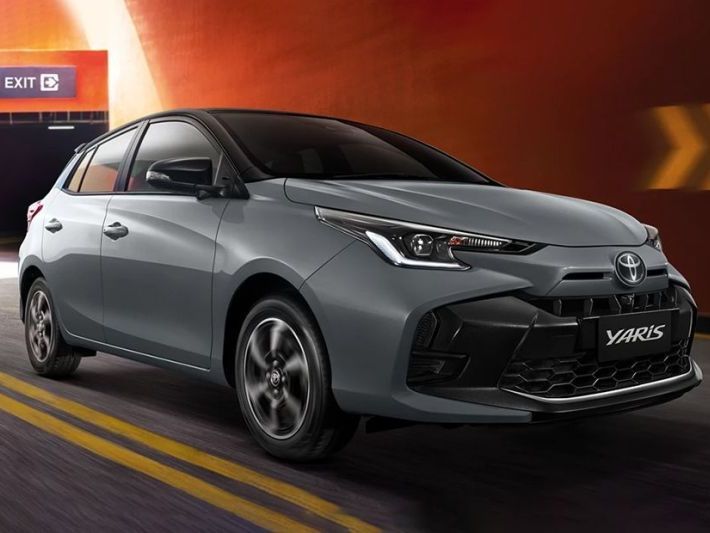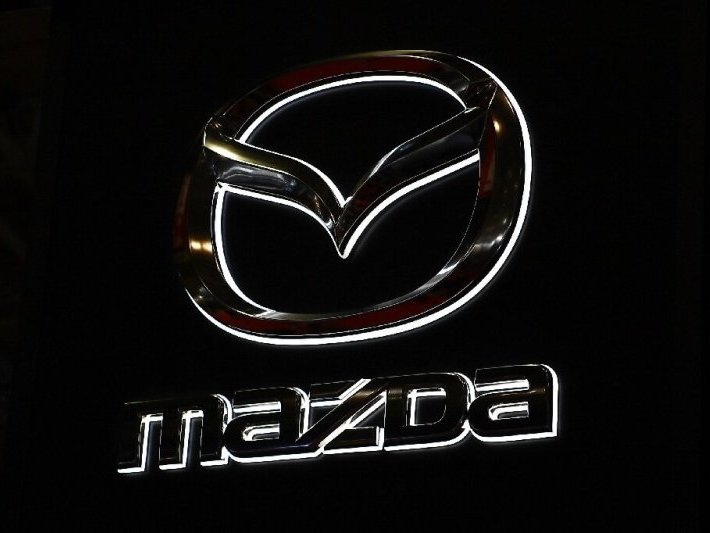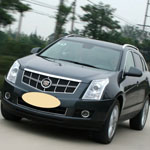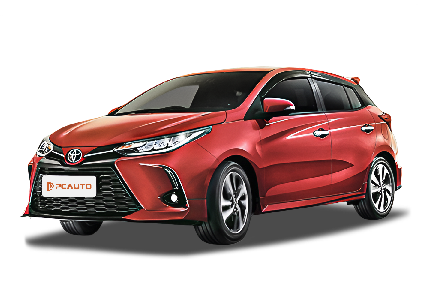Q
which toyota yaris is best
In the Malaysian market, the Toyota Yaris lineup offers a solid range of options—picking the right one really comes down to your needs and budget. If fuel efficiency and zipping through city traffic are your top priorities, the 1.5L naturally aspirated Yaris is a solid bet. It delivers smooth power and keeps maintenance costs low, making it perfect for daily commutes. For those craving a bit more pep, the Yaris GR-Sport steps things up with sportier tuning and a sharp-looking body kit—ideal if you actually enjoy the drive. Tech-savvy buyers should check out the higher trims, which come loaded with Toyota Safety Sense. Features like pre-collision warning and lane-keeping assist add a nice layer of security on the road.
Malaysia’s roads can be pretty varied, but the Yaris handles it well. Its compact size and nimble handling make squeezing through tight city streets a breeze, while the suspension setup strikes a good balance for comfort. It’s also worth mentioning that Toyota’s after-sales network in Malaysia is widespread, with plenty of spare parts available—so long-term ownership costs stay relatively manageable.
My advice? Test drive a few different variants to see what clicks with you, and don’t forget to shop around dealerships for the best promotions. That way, you’ll land the Yaris that fits you like a glove.
Special Disclaimer: This content is published by users and does not represent the views or position of PCauto.
Related Q&A
Q
What is the sport mode on a 2019 Toyota Yaris?
The Sport Mode on the 2019 Toyota Yaris is a drive mode selection feature that primarily enhances power response and handling by adjusting the vehicle's electronic control systems. When activated, the transmission delays upshifts to keep the engine in a higher rev range, delivering quicker acceleration, while the steering might feel slightly heavier to improve road feedback. This mode works best for highway overtaking or mountain road driving, letting the 1.5L naturally aspirated engine stretch its legs a bit more. Keep in mind, though, that Sport Mode does bump up fuel consumption slightly, so it's best used for short bursts when you need that extra zip. Rivals like the Honda Jazz or Mazda 2 offer similar modes too, but each has its own tuning—some focus on linear acceleration, others on sharpening cornering stability. Running Sport Mode all the time could speed up wear on the drivetrain, so make sure to check your transmission fluid and engine condition regularly. Also, pairing it with the manual shift function can take the driving experience up another notch.
Q
How to check transmission fluid 2019 Toyota Yaris?
To check the transmission fluid in a 2019 Toyota Yaris, first make sure the vehicle is parked on level ground and start the engine to let the transmission reach operating temperature (usually after driving for 10-15 minutes). Shift through all gears briefly, then return to Park and engage the parking brake. Open the hood and locate the transmission dipstick (typically with a red or yellow handle, near the firewall). Pull out the dipstick, wipe it clean, reinsert it fully, then pull it out again to check the fluid level—it should be within the "HOT" marks. Also inspect the fluid color (normally clear red; if it's black or has a burnt smell, it needs to be changed promptly). Note that some newer Yaris models may have a sealed transmission without a dipstick; these require a professional technician with special tools to check or replace the fluid. Regularly checking the transmission fluid protects the drivetrain effectively. It's recommended to replace it every 40,000-60,000 kilometers or as specified in the maintenance manual. If you frequently drive in stop-and-go traffic, you can shorten this interval slightly. Using non-genuine fluid may cause gear-shifting hesitation or transmission damage, so Toyota's original ATF WS fluid is recommended.
Q
What engine does a 2019 Toyota Yaris have?
The 2019 Toyota Yaris offers a range of engine options across different markets, with specific configurations varying by trim level and regional specs. Common powerplants include a 1.5-liter four-cylinder naturally aspirated engine (badged 1NZ-FE or an updated variant), pushing out around 107 horsepower. This unit pairs with either a 5-speed manual or 4-speed automatic transmission. Higher-spec models might upgrade to a more efficient 1.2-liter turbocharged engine or a hybrid system. Known for reliability and fuel efficiency, this engine uses Dual VVT-i variable valve timing to optimize low-end torque and high-speed power delivery—perfect for city driving. It’s worth noting that the same-generation Yaris also spawned the GR Sport variant, packing a more potent 1.6-liter turbo engine, though these performance models are pretty rare locally. For maintenance, stick to the 10,000 km or 6-month interval for full synthetic oil changes, and regularly clean the throttle body to keep the engine running efficiently. Toyota’s factory 100,000 km warranty is a nice bonus too, helping cut down on long-term repair costs. If you’re eyeing a used Yaris, pay extra attention to the engine mount bushings and timing chain condition—these are common wear items on higher-mileage examples.
Q
Is the 2019 Yaris a Mazda?
The 2019 Yaris isn't a Mazda; it's a classic compact car from Toyota. However, it's worth noting that in some markets like North America, Toyota collaborated with Mazda to launch the Yaris iA (later renamed Mazda2 Sedan), which was based on the Mazda2 platform. But that's different from the Yaris models commonly seen locally. The 2019 Yaris sold locally was still Toyota's independently developed third-generation model (XP150), powered by a 1.5L naturally aspirated engine, focusing on affordability, practicality, and reliability. Its design and technology were all from Toyota, such as standard VSC vehicle stability control and seven airbags for safety. It's important to note that platform sharing or joint production between car brands is common in the industry. For example, Toyota also has technical partnerships with Suzuki and Subaru. Such collaborations help optimize R&D costs and integrate the strengths of each brand, but they don't change the brand ownership of the vehicles. For consumers, when choosing a car, they should focus more on the specific model's configuration, after-sales network, and their own needs rather than just fixating on brand connections.
Q
How many miles per gallon does a 2019 Toyota Yaris get?
Fuel economy for the 2019 Toyota Yaris varies by trim and transmission. According to official figures, the automatic models with the 1.5L four-cylinder engine return around 30 mpg city, 36 mpg highway, and a combined 33 mpg. The manual transmission version is slightly thirstier, checking in at about 32 mpg combined. This car has won over plenty of buyers with its budget-friendly fuel costs and solid reliability, making it a great pick for daily commutes and city driving. Beyond just sipping gas, the Yaris is known for its compact size and nimble handling—perfect for navigating busy urban areas. If you’re really looking to maximize efficiency, keeping your tires properly inflated and avoiding aggressive acceleration or hard braking can help squeeze out a few more miles per gallon. And hey, if fuel economy is your top priority, it might be worth checking out hybrid options too—they typically deliver even better mpg numbers.
Q
What is the fuel efficiency of the 2019 Toyota Yaris?
The 2019 Toyota Yaris delivers impressive fuel economy, with figures varying slightly depending on the trim and transmission. The version equipped with the 1.5-liter four-cylinder engine and CVT transmission averages around 5.6 L/100km in city driving, drops to roughly 4.7 L/100km on the highway, and posts a combined fuel consumption of about 5.1 L/100km. That kind of efficiency makes it a solid pick for both daily commutes and longer road trips without breaking the bank at the pump. It’s worth keeping in mind that fuel efficiency can be influenced by driving habits, road conditions, and vehicle maintenance. Sticking to smooth acceleration, avoiding sudden braking, and keeping up with tire and engine maintenance can all help squeeze even more miles out of each tank. As a compact car, the Yaris has long been popular for its reliable performance and low upkeep costs, and its fuel economy stacks up well against competitors in its class. If you’re really looking to maximize fuel savings and eco-friendliness, the hybrid version is worth checking out—it takes fuel efficiency to an even higher level.
Q
Is a 2019 Toyota Yaris a good car?
The 2019 Toyota Yaris is a solid all-around subcompact that’s perfect for daily commuting. It carries on Toyota’s reputation for reliability and durability, with a smooth 1.5L naturally aspirated engine that delivers great fuel economy—ideal for city driving. While the interior isn’t the roomiest, the layout is smart, and there’s enough storage space for everyday needs. The cabin materials prioritize functionality over flash, and in terms of features, you get basic safety gear like ABS and airbags, with higher trims possibly adding nice-to-haves like a backup camera. Maintenance costs are reasonable, parts are easy to come by, and it holds its value well as a used car. If you’re on a tight budget and value practicality and dependability, the 2019 Yaris is definitely worth a look. The subcompact segment is pretty competitive, though—besides the Yaris, check out rivals like the Honda Jazz or Mazda 2. They each have their own strengths, whether in handling or interior design, so it’s a good idea to test-drive a few and see which fits your needs best before deciding.
Q
Is the 2019 Yaris a reliable car?
The 2019 Yaris holds up pretty well in terms of reliability. It carries on Toyota's usual reputation for durability, with that tried-and-true 1.5L naturally aspirated engine under the hood. Maintenance costs are pretty reasonable, making it a solid pick for daily commuting. The transmission shifts nice and smoothly, and the suspension setup leans towards comfort, which works well for local road conditions. The interior space isn't exactly cavernous, but the storage solutions are practical. Fuel economy is another plus – it's pretty efficient, so you'll save a decent amount on gas over time. When it comes to keeping it reliable, make sure to keep up with regular maintenance records, especially things like transmission fluid and brake upkeep. Those little details really affect how the car holds up long-term. If you're looking at the used market, the 2019 Yaris has decent resale value, but when checking one out, pay extra attention to the electrical system and suspension components. Those can turn into problem areas if they haven't been properly maintained. Compared to its peers, it has a relatively low failure rate, but even so, holding onto complete service records after buying will help keep it running at its best.
Q
How much is a 2019 Yaris?
The 2019 Toyota Yaris typically ranges from around RM50,000 to RM70,000 in the used car market, with prices varying based on condition, mileage, trim level, and location. The higher-spec 1.5L Sport variant or hybrid models might edge closer to RM80,000. Known for its reliability and fuel efficiency, this car’s 1.5L Dual VVT-i engine paired with a CVT transmission works great for city driving. Maintenance costs are reasonably affordable too, making it a top pick for many families. When buying used, it’s smart to check service records and accident history—factory-certified used cars are your best bet for quality. Keep an eye out for warranty offers from Toyota or authorized dealers; these vehicles usually go through strict inspections and come with extra coverage. Plus, the Yaris holds its value well for a subcompact, so you won’t take a huge hit when reselling later. If you’re on a tighter budget, 2018 or 2020 models are worth considering—they’re pretty similar in features but might be more budget-friendly.
Q
How much is a 2019 Yaris worth?
The 2019 Toyota Yaris is currently fetching prices in the used car market ranging from approximately RM55,000 to RM75,000. The exact price depends on factors like condition, mileage, trim level, and service history, with higher-spec 1.5L Sport variants or hybrid models usually commanding a premium. This car is known for its reliability and fuel efficiency, making it perfect for city commuting. Its 1.3L or 1.5L engine delivers smooth power, and maintenance costs are relatively low. With a strong presence in the used car market, parts are readily available, ensuring easy follow-uprepairs. When buying, it's advisable to check for complete service records, pay special attention to the transmission and chassis condition, and consider using a third-party inspection service to verify the car's condition and avoid accident-damaged or flood-affected vehicles. Additionally, keep an eye on the expiry dates of road tax and insurance, as these can impact the final transaction price.
Popular Cars
Model Year
Car Compare
Car Photo
Latest Q&A
Q
How much is 1 horsepower?
Horsepower (hp) is a unit of power that measures how much work a horse can do in one second—specifically, lifting 550 pounds one foot off the ground. In metric terms, that’s roughly 745.7 watts. The term was coined by engineer James Watt to compare steam engines to the workhorses they were replacing.
In cars, horsepower tells you how strong an engine is, but it’s not the whole story. Torque, weight, and drivetrain efficiency all shape how a car actually feels on the road. Also worth noting: there are slight variations in how horsepower is measured. For example, metric horsepower (PS) is about 0.986 hp, though the difference is negligible in everyday talk.
When shopping for a car, don’t just fixate on horsepower. Think about how you’ll use it. A small turbocharged engine might deliver better low-end torque for stop-and-go traffic, while a high-horsepower engine could be overkill for city driving. And if you’re looking at EVs, remember their power is often listed in kilowatts (kW)—where 1 kW equals about 1.34 hp. Knowing these conversions helps compare different powertrains more accurately.
Q
How to calculate main engine power?
The calculation of main engine power is usually based on the physical relationship between torque and RPM, with the formula being * * power (kW)=torque (Nm) x RPM ÷ 9549 * *, or * * horsepower (HP) in English units=torque (lb ft) x RPM ÷ 5252 * *. In actual measurement, manufacturers will collect data and draw power speed curves under specific operating conditions through engine bench testing, while commonly used calibration values by consumers (such as maximum power) are mostly theoretical peak values. It should be noted that the power on the wheels (the actual power transmitted to the wheels) may be lower than the engine output value due to factors such as transmission efficiency and transmission losses. This is also why modification enthusiasts often verify actual performance through chassis dynamometers. In addition, technologies such as turbocharging and variable valve timing can optimize combustion efficiency and indirectly improve power performance, while electric vehicles directly output instantaneous maximum torque through motor characteristics, and the power calculation logic is different from traditional internal combustion engines. If you have doubts about the specific vehicle model data, you can refer to the official technical manual or professional evaluation report.
Q
What does a 1.6 litre engine mean?
A 1.6-liter engine means the total displacement of all cylinders is 1.6 liters—in other words, the combined volume swept by the pistons from top to bottom dead center is 1,600 cubic centimeters. Generally, a larger displacement means more power, but it also leads to higher fuel consumption. Engines of this size are very common in the local market because they strike a good balance between performance and fuel efficiency, making them ideal for daily commuting and family use.
Displacement is one of the key indicators of engine performance, but real-world performance also depends on other technologies, like turbocharging, fuel injection systems, and variable valve timing. These can make engines of the same displacement produce different power outputs and efficiency levels. For example, some 1.6L turbocharged engines can deliver power close to a naturally aspirated 2.0L engine while being more fuel-efficient.
When choosing an engine, it’s not just about displacement—you should also consider your driving habits and needs. If you frequently drive long distances or at high speeds, a bigger engine might be preferable, while a smaller turbocharged unit could be the smarter choice for city driving.
Q
Is a 1.6 L engine good?
The 1.6L engine strikes a good balance for everyday driving. It delivers enough power for city commutes and occasional highway trips while maintaining decent fuel efficiency. Maintenance costs are reasonable too—a practical choice for family cars.
Naturally aspirated 1.6L engines are particularly reliable, with mature tech that prioritizes durability and low upkeep. If you want extra punch, turbocharged 1.6L variants can match the performance of some 2.0L naturally aspirated engines without sacrificing much fuel economy.
That said, your driving habits matter. Frequent long-distance drivers might find 1.6L a bit underwhelming, but it’s more than adequate for urban errands. Keep in mind, performance varies across brands—always test-drive before deciding.
Q
Is a 1.5 litre engine good?
Whether a 1.5L engine is right for you depends on your driving needs. For city commuting and daily errands, this displacement performs exceptionally well—it’s fuel-efficient, cheaper to maintain, and ideal for stop-and-go traffic. Plus, many modern 1.5L turbocharged engines now deliver power close to traditional 2.0L naturally aspirated ones, easily handling most family trips. If you’re mainly driving in urban areas with occasional highway runs, a 1.5L is plenty. But if you frequently haul heavy loads uphill or crave sharper throttle response, you might want to consider a larger engine. Keep in mind, though: advancements like optimized intake/exhaust systems and direct injection have given smaller turbo engines decent low-end torque, which is a big help in crawling traffic. So beyond displacement, pay attention to how the engine is tuned and what tech’s under the hood.
View MoreRelated News

Toyota Yaris Interior Design Revealed: The Ideal Choice for Daily Commutes
AshleyJul 17, 2025

Highlights of the Toyota Yaris: The Perfect Fusion of Outstanding Power and Comfortable Handling
MichaelApr 16, 2025

Mazda Plans to Launch CX-20 in Southeast Asia to Compete with Toyota Yaris Cross
RobertMar 20, 2025

Is my Yaris fuel consumption normal? What should the fuel consumption per 100km be?
MichaelFeb 28, 2025

Toyota takes the crown at the second stop of the 2025 WRC, the GR Yaris helps Toyota take the top of the points table
JamesFeb 19, 2025
View More


















Pros
Cons